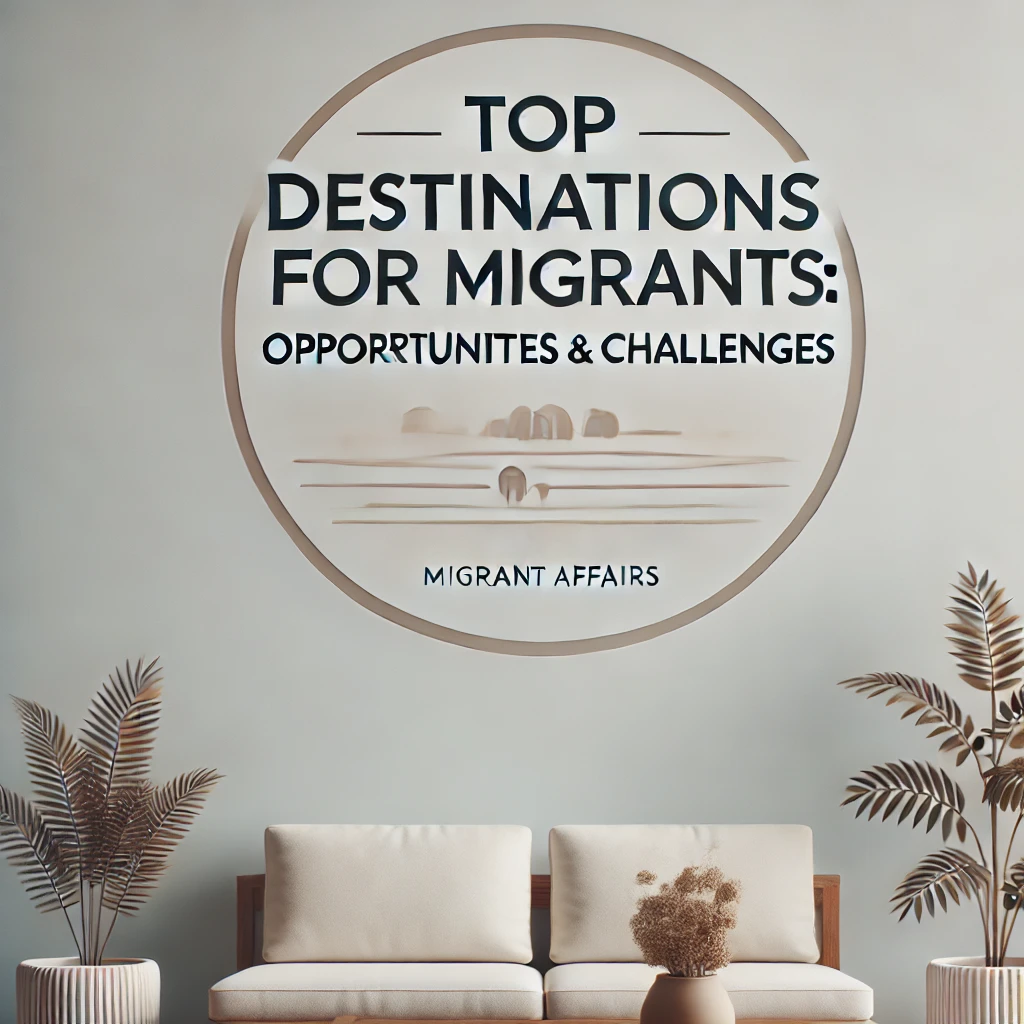Migration is a powerful force that shapes the world in many ways, offering new opportunities but also posing significant challenges for those who embark on the journey. As global migration trends evolve, some countries have become preferred destinations for migrants seeking better lives. These destinations offer a mix of opportunities and challenges, which migrants must navigate to successfully integrate into their new homes.
In this article, we will explore some of the top destinations for migrants and the unique benefits and hurdles they present.
1. Canada: A Beacon of Hope for Migrants
Canada is often at the top of the list when it comes to preferred migration destinations. Known for its multicultural society, Canada welcomes a wide range of immigrants, including skilled workers, refugees, and students.
Opportunities:
- Inclusive Immigration Policies: Canada’s immigration system is designed to attract skilled workers, with pathways for permanent residency and citizenship.
- Strong Economy and Job Market: Canada’s strong economy offers a wide range of job opportunities in various sectors, particularly for immigrants with specific skills.
- High Quality of Life: Canada boasts excellent healthcare, education, and social services, ensuring that newcomers can build stable, successful lives.
Challenges:
- High Cost of Living: In some cities like Toronto and Vancouver, the cost of living can be quite high, especially in terms of housing.
- Integration Challenges: While Canada is known for its multicultural society, some migrants still face challenges in fully integrating, particularly when it comes to language barriers and finding suitable employment.
2. Germany: Europe’s Top Destination for Skilled Migrants
Germany has emerged as one of the most sought-after destinations for migrants, particularly those with skills in engineering, IT, and healthcare. The country’s strong economy and stable labor market make it an attractive option.
Opportunities:
- Strong Job Market: With a high demand for skilled workers, Germany offers opportunities for immigrants to enter the workforce in various industries.
- Comprehensive Social Services: Germany’s social welfare system provides healthcare, unemployment benefits, and public education to all residents, including migrants.
- Cultural Integration Programs: The German government provides language and integration courses, which help migrants adjust to their new surroundings.
Challenges:
- Bureaucratic Hurdles: Migrants often face complex visa and residency application processes, which can delay their integration.
- Social Tensions: Despite Germany’s commitment to inclusivity, some migrants experience discrimination, and anti-immigrant sentiment can be prevalent in certain areas.
3. Australia: A Popular Destination for Migrants Seeking Better Opportunities
Australia is a popular destination for skilled workers, students, and those seeking refuge from conflict zones. The country’s diverse society and high living standards make it a top choice for many migrants.
Opportunities:
- Skilled Migration Programs: Australia offers various visa programs for skilled workers, students, and entrepreneurs, making it easier for qualified migrants to enter the country.
- High Living Standards: Australia is known for its high quality of life, with access to quality healthcare, education, and a robust social safety net.
- Beautiful Environment: Australia’s natural beauty and laid-back lifestyle attract migrants seeking a peaceful life.
Challenges:
- Cost of Living: Like Canada, Australia’s major cities such as Sydney and Melbourne can be expensive, particularly when it comes to housing.
- Stringent Visa Policies: While Australia’s immigration system is welcoming, obtaining a visa can be a lengthy and competitive process, especially for those without in-demand skills.
4. United States: A Land of Diverse Opportunities
The United States has historically been a land of opportunity for millions of migrants. With its vast economy, technological advancements, and cultural diversity, it remains a major destination for those seeking new beginnings.
Opportunities:
- Economic Opportunities: The U.S. offers a wide range of job opportunities across numerous industries, from technology to agriculture.
- Educational Institutions: Many of the world’s top universities and research institutions are based in the U.S., making it a prime destination for students and researchers.
- Cultural Diversity: The U.S. is home to people from every part of the world, offering a diverse cultural experience for newcomers.
Challenges:
- Complicated Immigration System: The U.S. has a highly complex immigration system, and migrants often face long wait times, high fees, and uncertainty in obtaining legal status.
- Social and Political Divisions: Migrants may encounter challenges related to xenophobia and political polarization, particularly in an environment where immigration policy is highly contentious.
5. Sweden: A Model of Social Welfare and Integration
Sweden has long been recognized for its commitment to social welfare and integration programs, making it an attractive destination for migrants, particularly refugees and asylum seekers.
Opportunities:
- Comprehensive Welfare System: Sweden offers excellent healthcare, free education, and generous social benefits to migrants, ensuring that newcomers have access to essential services.
- Integration Programs: Sweden’s government provides language courses and integration initiatives to help migrants settle into their new community.
- High Quality of Life: With a focus on equality and human rights, Sweden boasts a high standard of living for all residents, including migrants.
Challenges:
- Integration Difficulties: While Sweden offers support, migrants may still face difficulties in fully integrating, particularly in terms of employment and social acceptance.
- Limited Housing: Sweden has faced a housing shortage in recent years, making it challenging for migrants to find affordable accommodation.
As migration trends continue to grow, many countries offer promising opportunities for migrants seeking a better life. While these destinations provide various benefits, including job opportunities, healthcare, and cultural integration, they also present challenges such as high costs of living, bureaucratic hurdles, and social tensions.
Migrants must consider both the opportunities and challenges of their chosen destination, and governments must work towards creating inclusive, supportive environments that promote integration and equality. By fostering policies that address the needs of migrants, these countries can continue to be destinations of hope and opportunity for people around the world.

